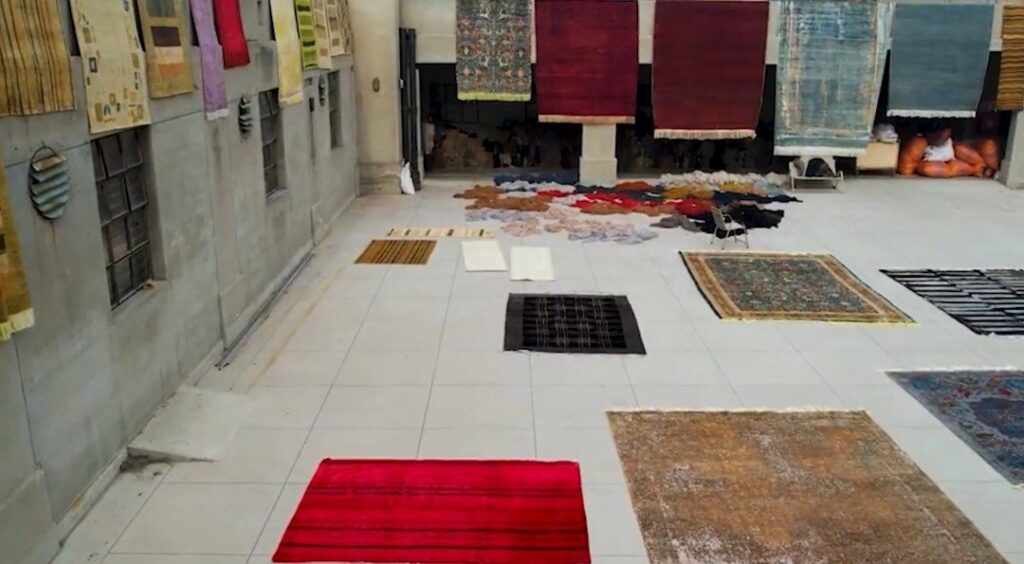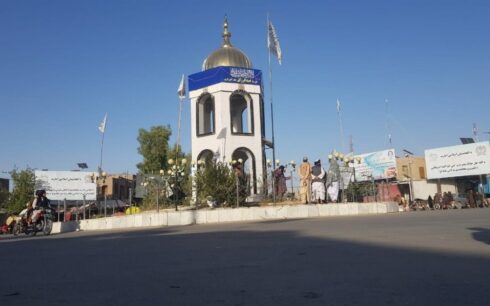In the shadow of illegal migration and human trafficking, Haidar’s story stands as a stark illustration of the hardships many endure in pursuit of survival. For more than three years, he worked in Pakistan as a child laborer, weaving carpets for up to 16 hours a day in dire conditions, earning barely enough to cover his needs.
Speaking under a pseudonym, Haidar shared his experience of forced labor, recounting the relentless demands, low pay, and lack of freedom that defined his life in Pakistan. Like many other young Afghans, he left his home in Kabul, lured by the hope of a stable income, only to face exploitation and despair.
The journey to Pakistan
Years ago, Haidar departed Kabul with the son of a carpet workshop owner, bound for Peshawar, Pakistan. The journey itself was arduous, marked by sleepless nights and precarious conditions. “We spent a night at the Afghanistan-Pakistan border, enduring many difficulties before finally arriving in Peshawar,” Haidar said.
In Peshawar, he began his apprenticeship in a carpet-weaving workshop, laboring for two years under exhausting conditions. After this period, he moved to Parachinar, another city in Pakistan, where he worked for six more months. Each day was marked by repetitive tasks, long hours, and a meager diet.
Seeking slightly better pay, Haidar eventually relocated to Karachi. But the slight increase in wages came with new challenges, including the hostility of his employer, who opposed his desire to return to Afghanistan. “I stayed in Karachi for about seven months, but my employer withheld my earnings and pressured me to stay. Eventually, I decided to leave despite the obstacles,” he said.
Returning to Kabul was no less difficult. “We spent two days stuck at the border on our way back to Afghanistan. The challenges we faced were endless,” Haidar said.

Relentless labor, barely any rest
Haidar’s work schedule was punishing, leaving little room for rest or personal freedom. “We started work at 7 a.m. and continued until 11 a.m., when we had a short break for lunch. Afterward, we worked until 1:30 p.m., resumed at 2 p.m., and didn’t stop until 2 or 3 a.m.,” he said. With only five hours of sleep each day, he described the routine as relentless and dehumanizing.
His wages reflected the exploitation inherent in such labor. During his initial training period, Haidar earned 1,500 Pakistani rupees per month (about $5). Even after gaining experience, his income rose only marginally. “By the time I was in Parachinar, my monthly wage was 3,000 rupees (about $10),” he said.
Despite the grueling workload, workers were given limited nourishment. Meals typically consisted of beans, potatoes, and rice, with meat served only once a week. “The conditions were tough,” Haidar said, “but we had no other choice.”
Life inside the workshop
The carpet-weaving workshops were insular and oppressive. Workers rarely left the premises, seeing the outside world only on their weekly day off. “We were inside the workshop almost all the time,” Haidar said. “We couldn’t tell whether it was day or night. Only on Fridays did we step outside, and even then, just briefly.”
The demand for productivity was relentless. Haidar and his colleagues, working in teams of six, were required to complete a 20-meter carpet within 45 days. Any delay could result in harsh reprimands or reduced wages.
Adding to the hardship was the physical toll of the work. “We faced constant pressure to produce, with little regard for our well-being,” Haidar said.
The broader context: Poverty and migration
Haidar’s story is emblematic of the struggles faced by many Afghans who resort to illegal migration as a means of escaping poverty. The lack of job opportunities in Afghanistan drives countless individuals to embark on perilous journeys, often leading to exploitation and suffering.
“Many people take these difficult paths because they have no other options,” Haidar said. “They’re trying to provide for their families, but the cost is often too high.”
Haidar believes that creating sustainable job opportunities in Afghanistan is essential to reducing illegal migration. “If people had work here, they wouldn’t leave,” he said.
Haidar’s story underscores the urgent need for policy interventions to address unemployment and economic disparity in Afghanistan. Without such efforts, the cycle of poverty and migration is likely to continue, leaving more young people vulnerable to exploitation in foreign lands.
As Haidar reflects on his experience, he hopes that sharing his story will shed light on the hardships faced by countless others like him — and inspire meaningful action to create a better future.





